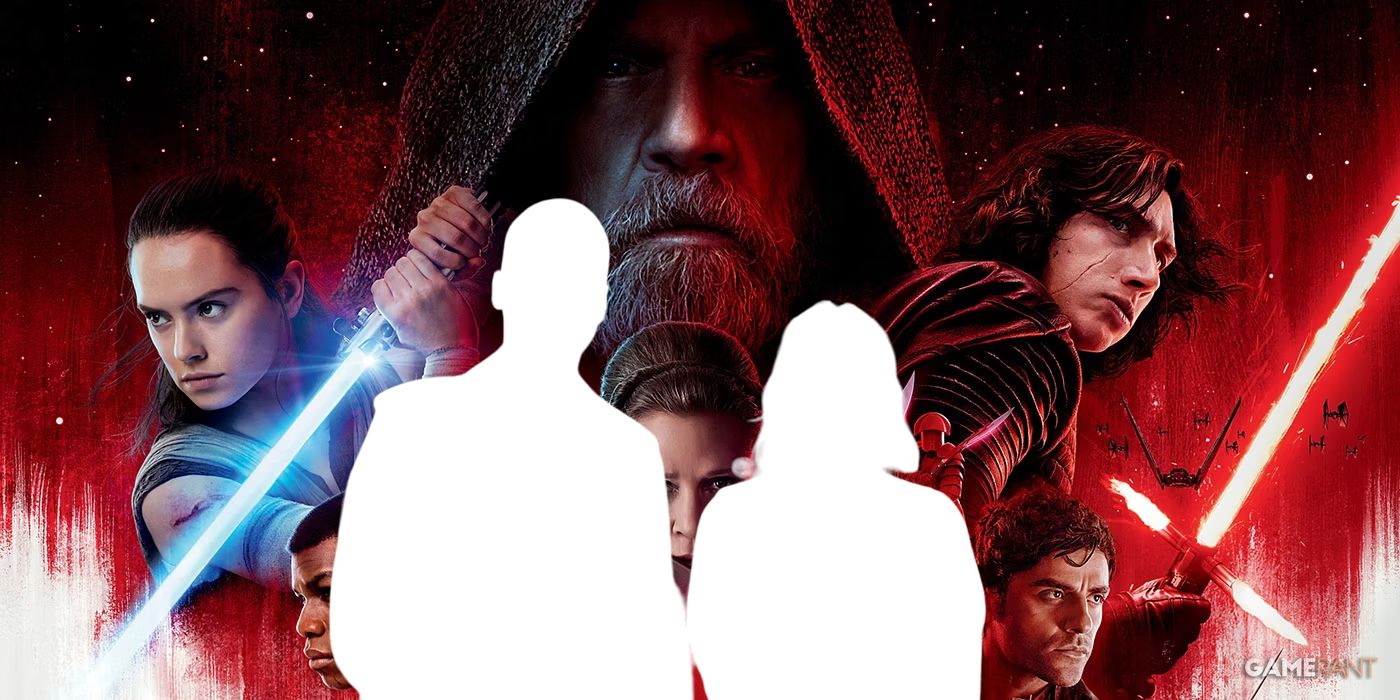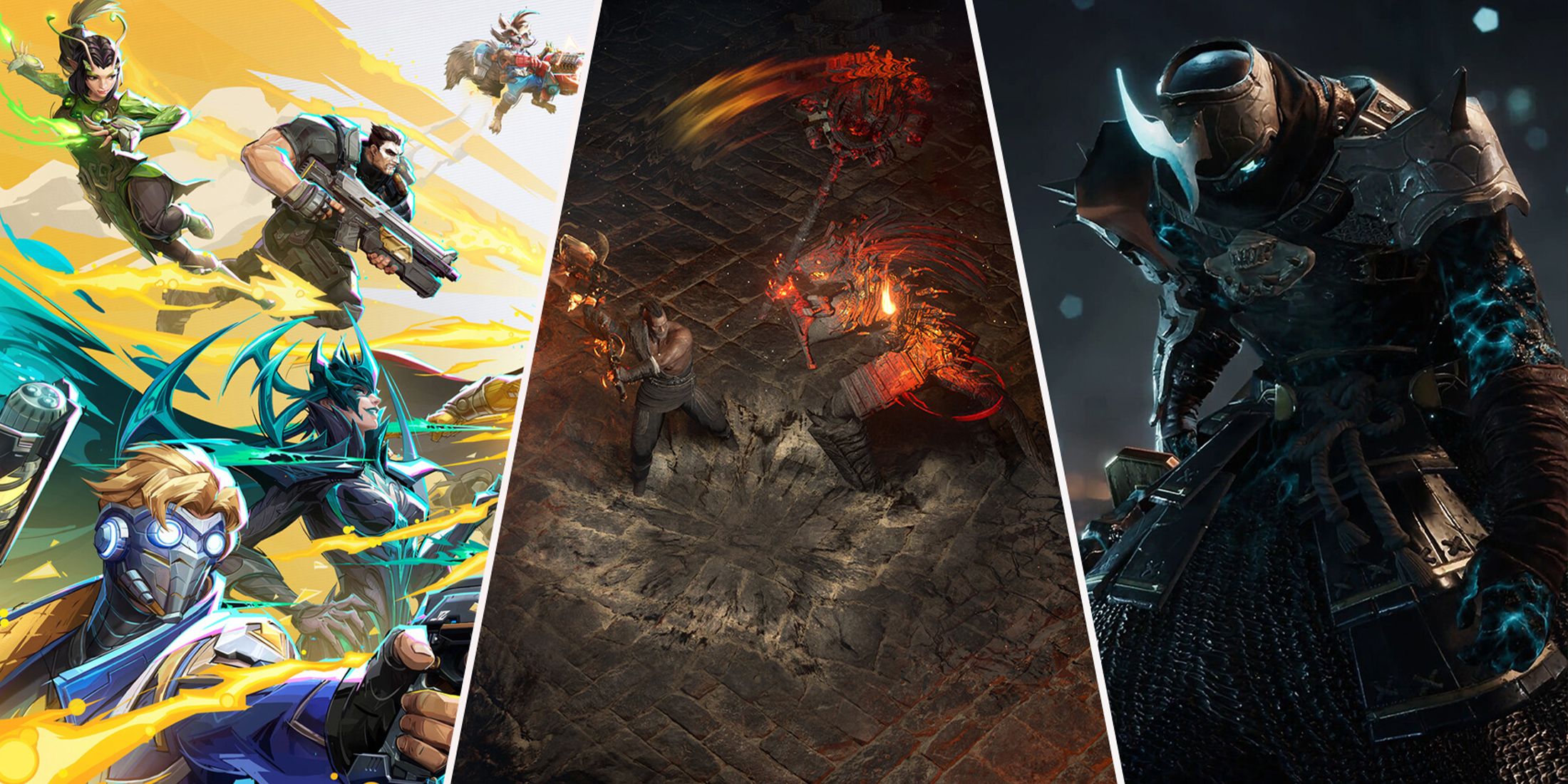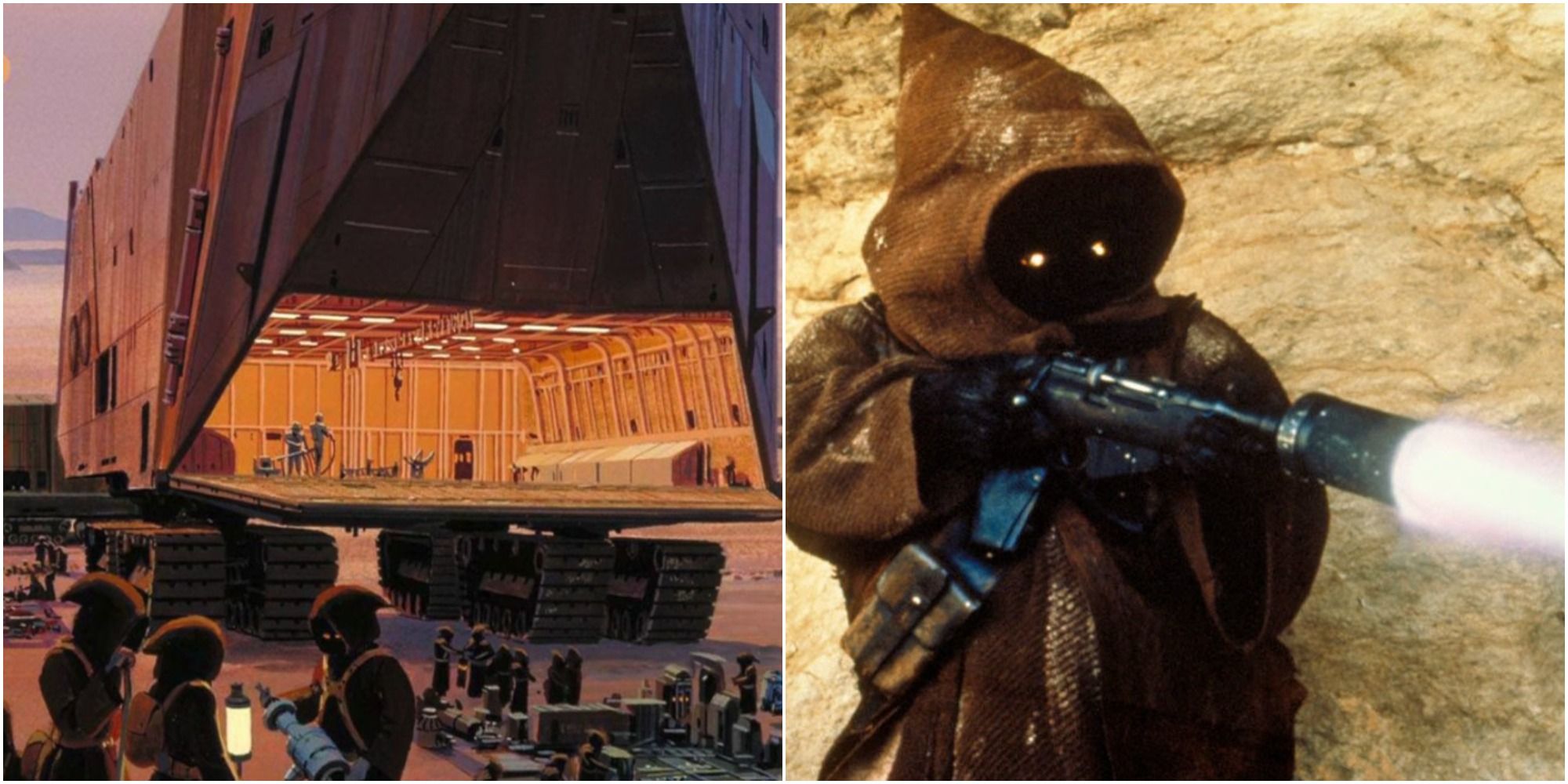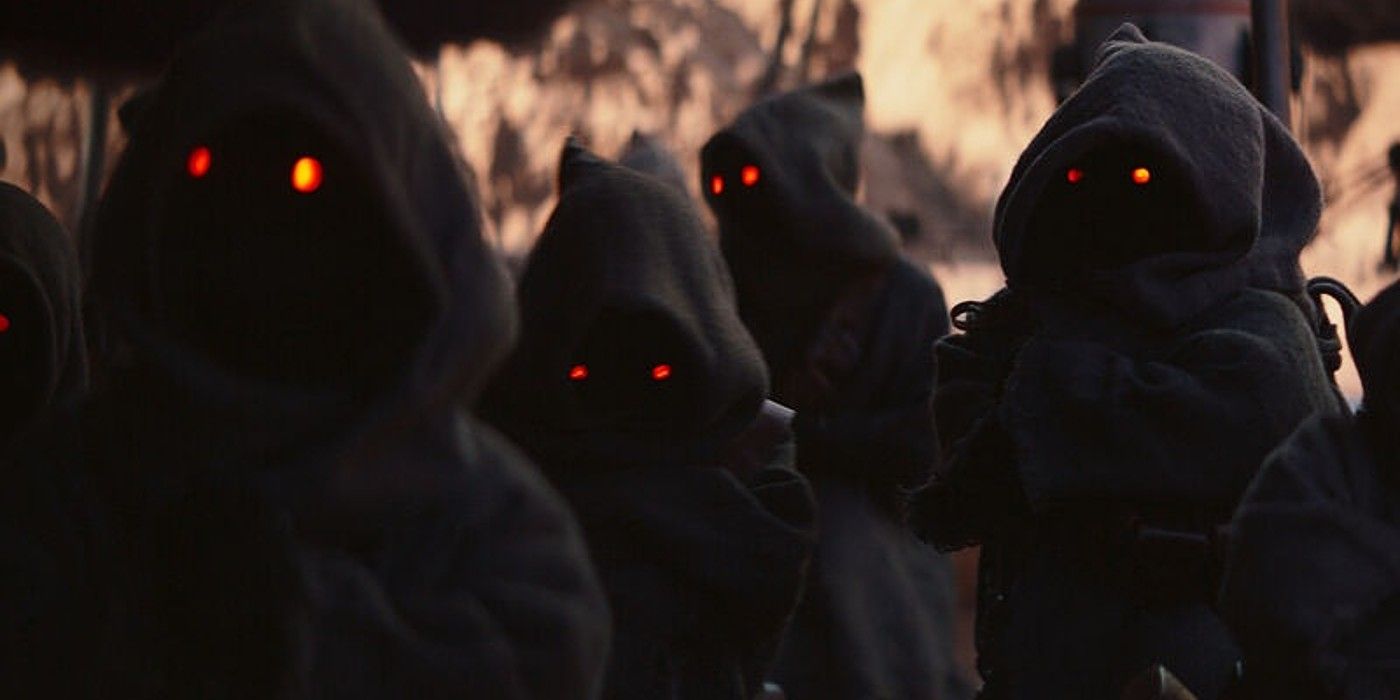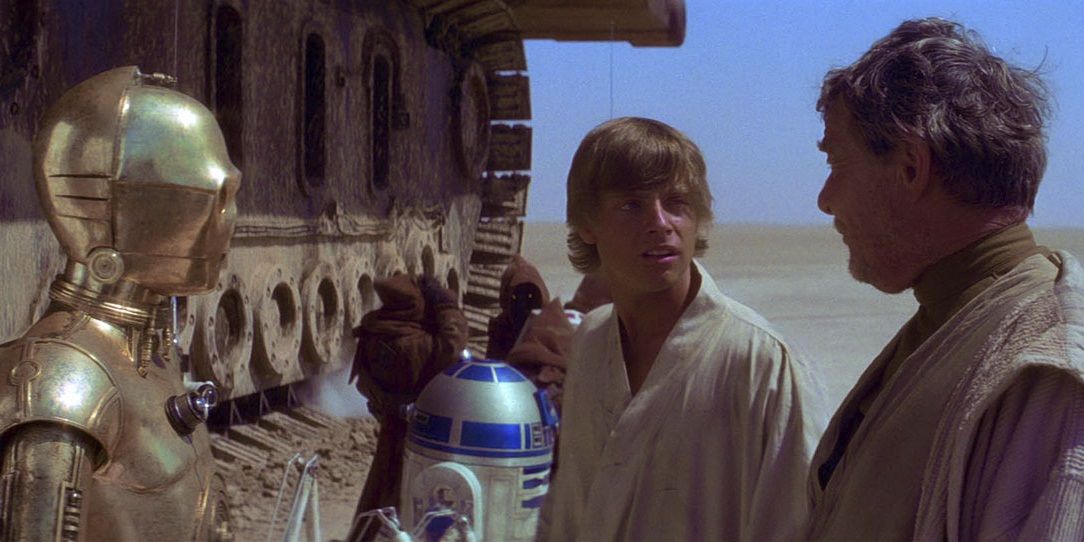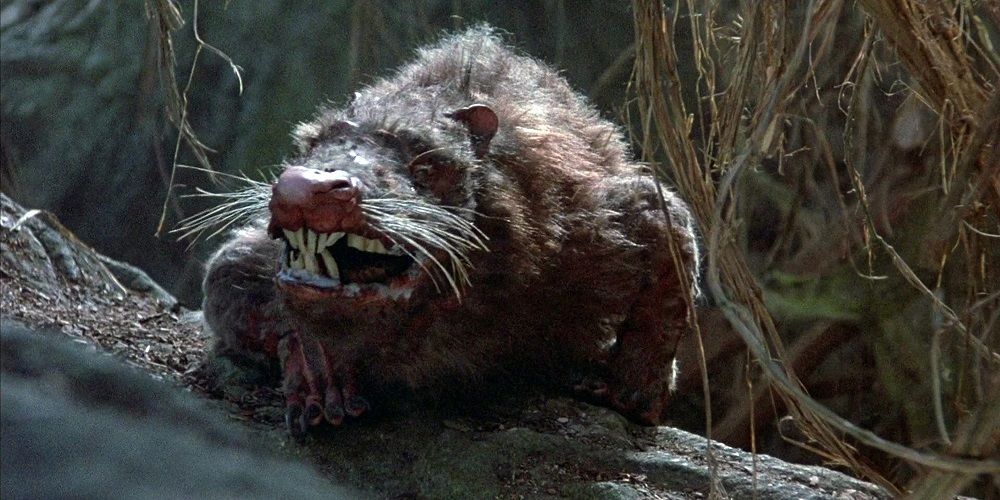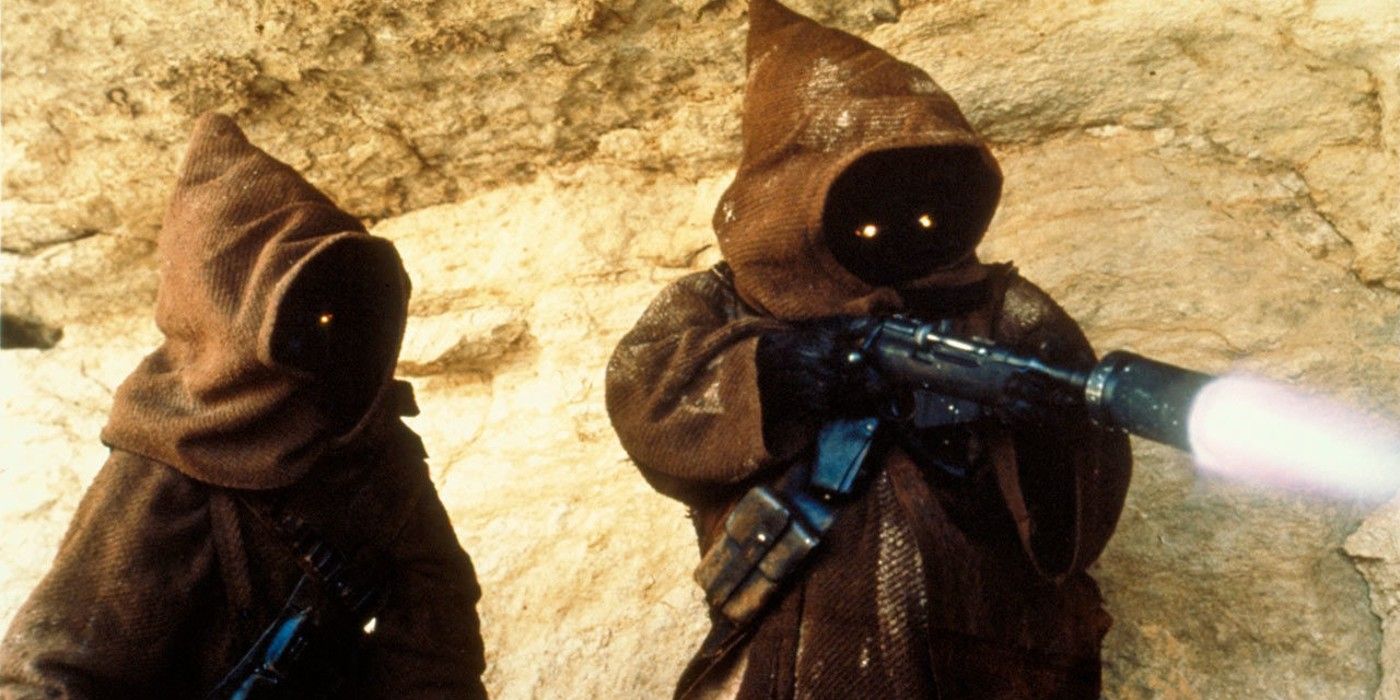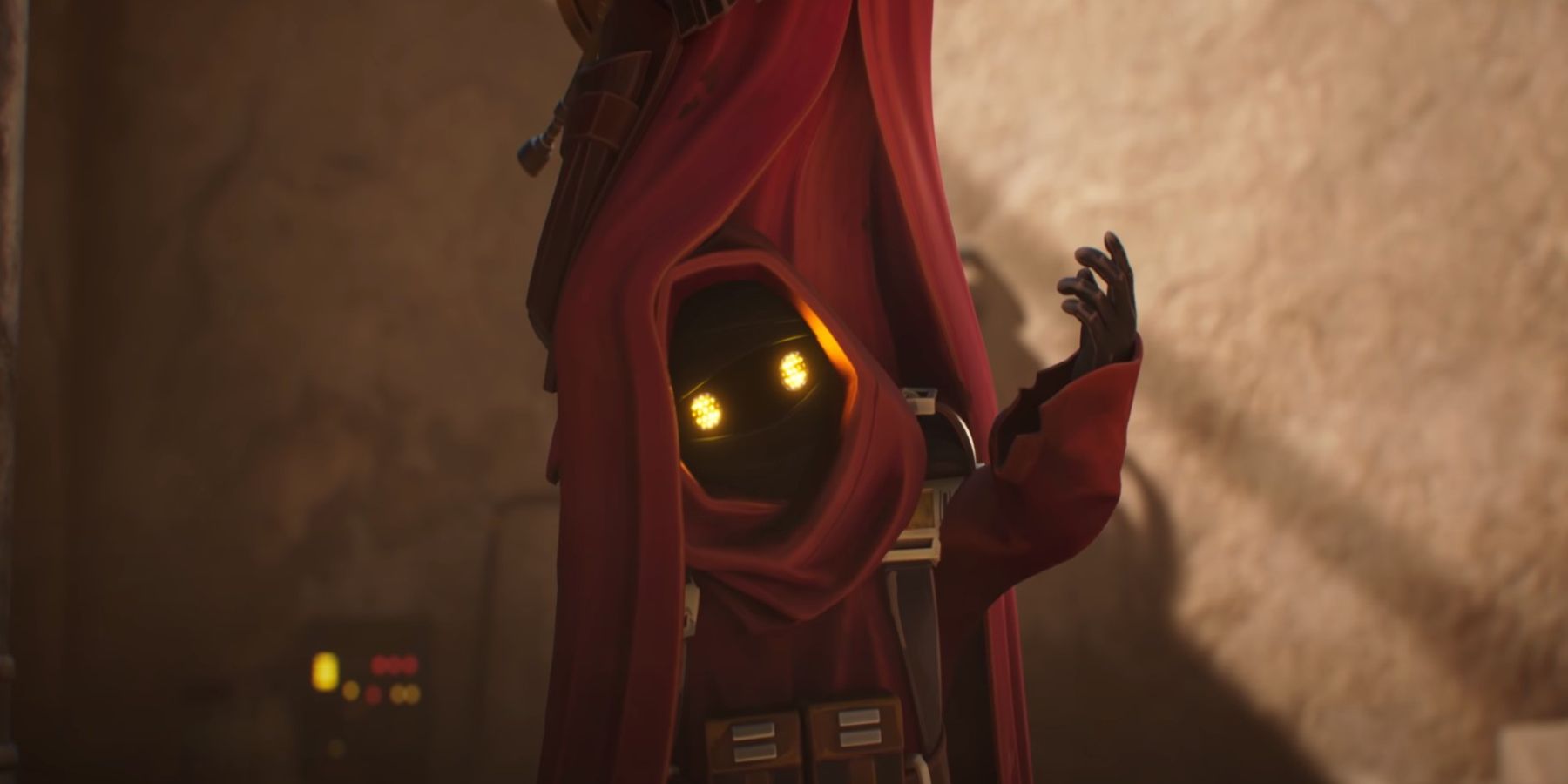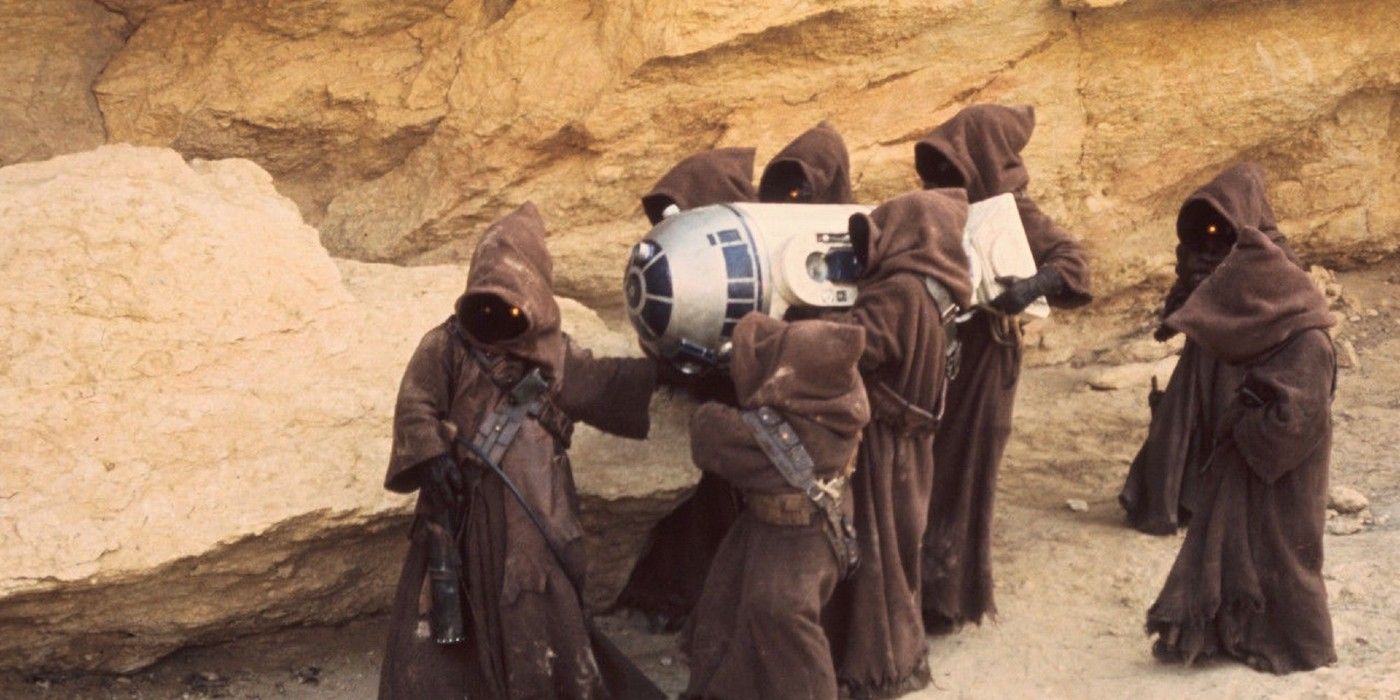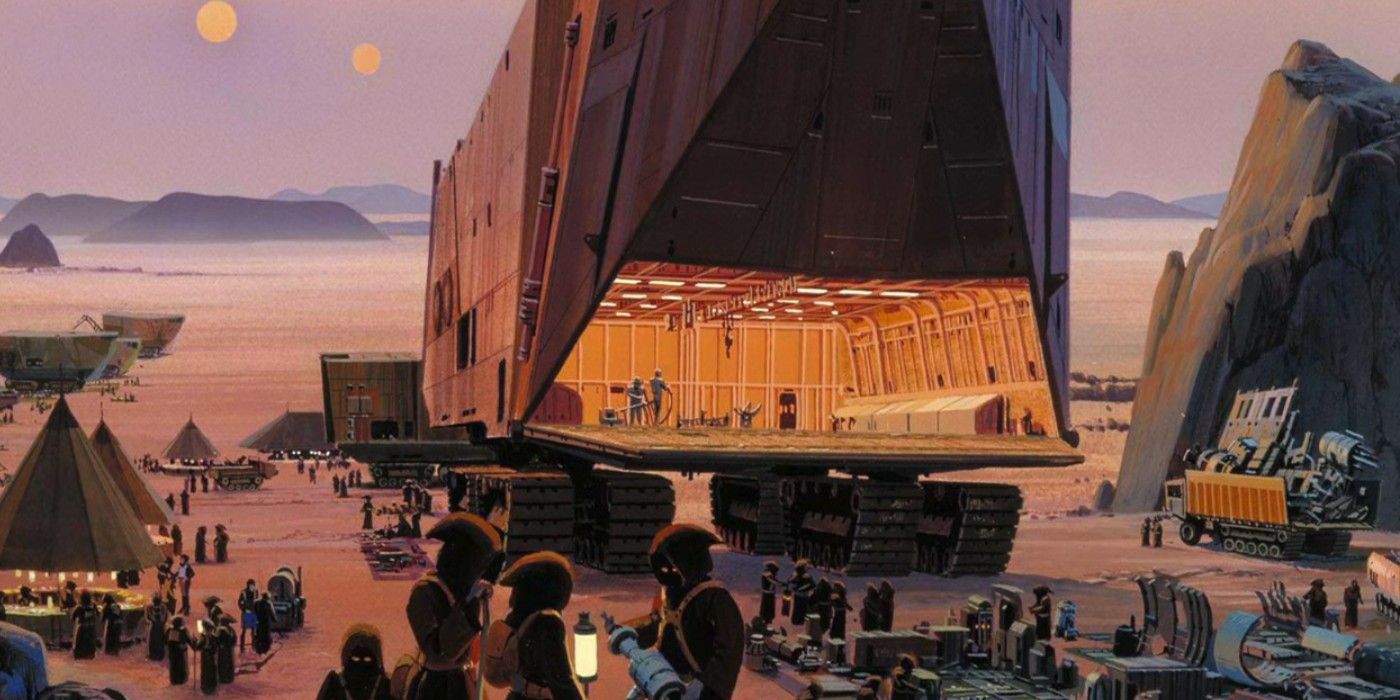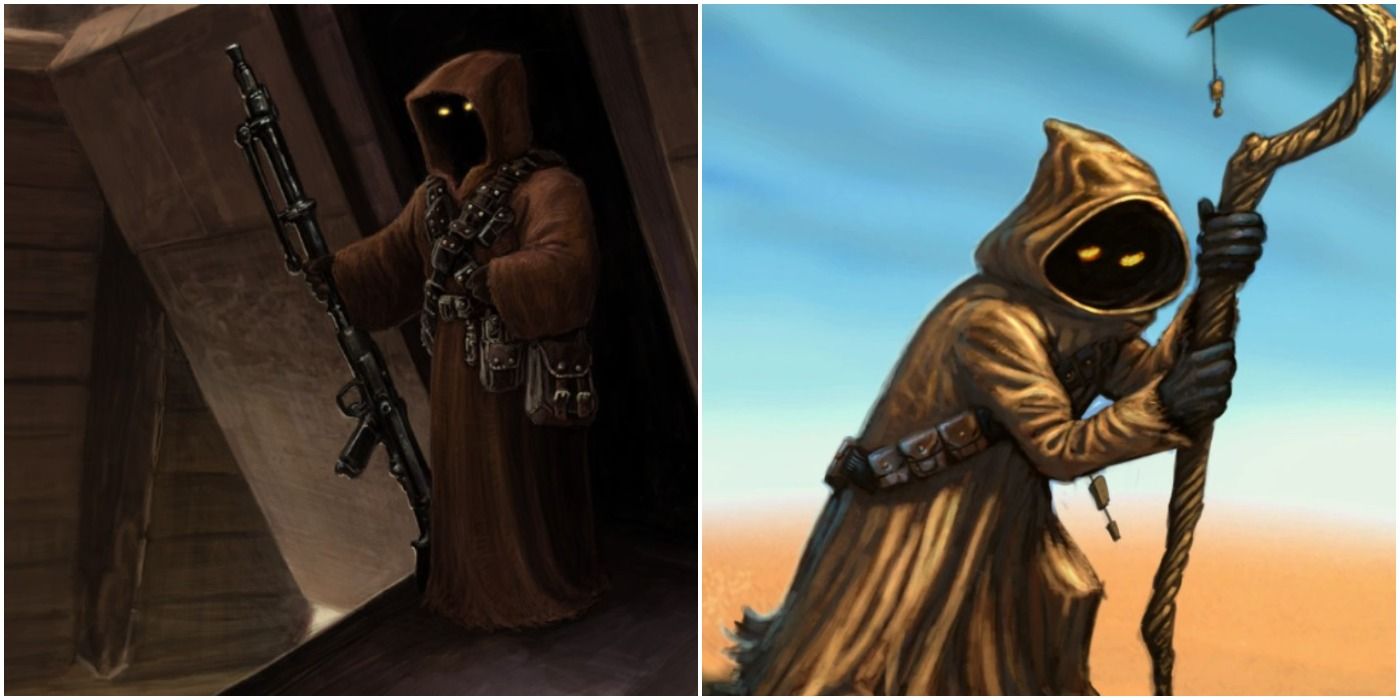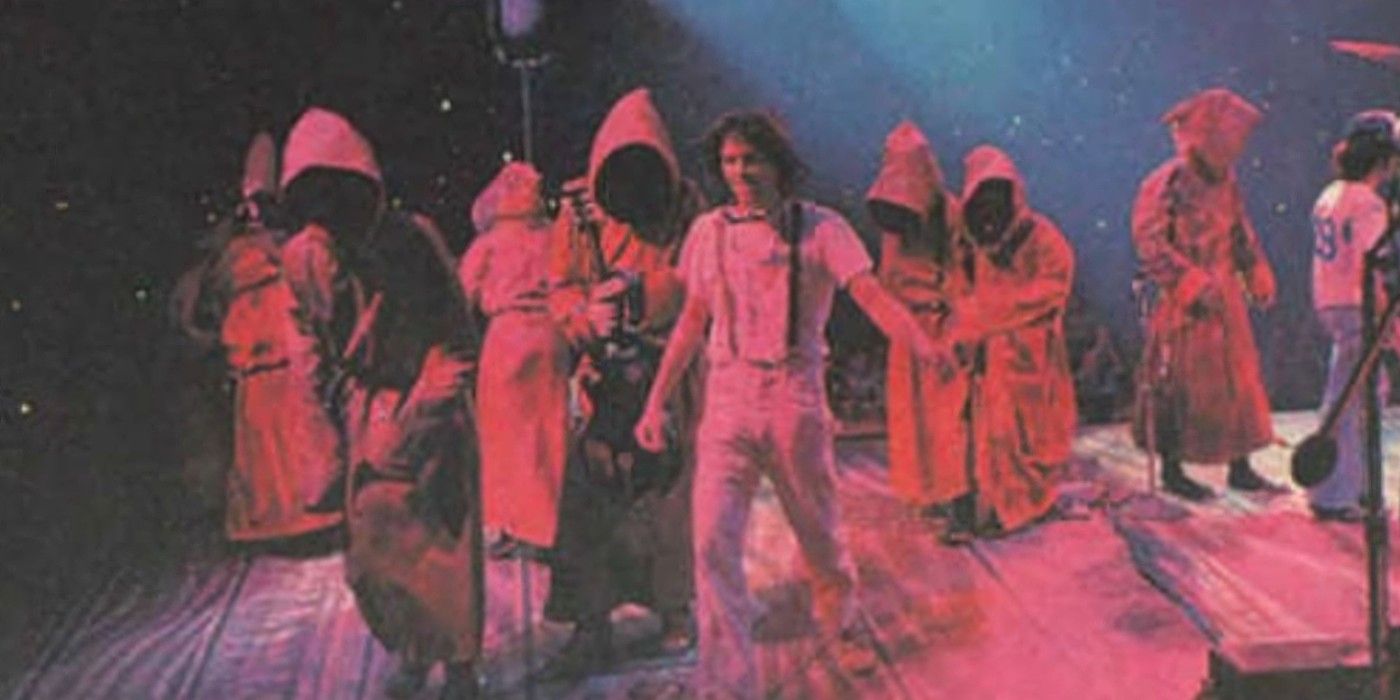When it comes to George Lucas' epic space-fantasy Star Wars, there is a myriad of unique alien critters and humanoids that populate each star system in the galaxy far, far away. One of the most recognizable—and perhaps most interesting—comes in the form of the Jawas; Tatoonie's resident scavengers.
Though they make several appearances dating back to the first film, A New Hope, there are various details about Jawas that remain as shrouded as their cloaked bodies. It's time to gather aboard the virtual Sandcrawler and explore some of the more unknown and interesting facts about these Star Wars creatures.
9 There Are Variations On Other Planets
While it's fairly well known that Jawas originate on the desert planet of Tatooine, many have since migrated to various other planets. These include the similar desert planet Arvala-7, the crystalline Vanqor, and the more hostile volcanic Nevarro.
Known as "Offworld Jawas," these travelers are similar to their Tatooine brethren and continue their traditional scavenging ways. However, these different breeds of Jawas sometimes sport grey robes and possess red eyes. This explains why the Jawas in The Mandalorian are shown with this more sinister shade of red eyes rather than yellow.
8 Origins And Functions Of Their Sandcrawlers
Along with their robes, glowing eyes, and small stature, Jawas are largely known for the huge mechanical vehicles they sluggishly travel in, known as Sandcrawlers. These transports are used as mobile bases for scavenging. The mechanical monstrosities weren't crafted by Jawas themselves, but rather, originate from old mining companies on Tatooine.
These companies had long since abandoned the vehicles in the desert following failed operations. Being the tech scavengers that they are, the Jawas seized the opportunity to use these crafts as tools to aid in their scouring efforts. The towering Sandcrawlers have proven quite useful for the little guys, as they can hold up to a whopping 1,500 droids that they've wrangled, and grant protection from hostile sandstorms as well as Tusken Raiders.
As an interesting side note—these unique vehicles, modeled from concept art by Ralph McQuarrie, were inspired by a NASA-crafted rover. They've since been the architectural inspiration for Lucasfilm's Singapore headquarters.
7 First Conceived As Rodent-Like
Despite this unique species dating back to the original Star Wars, there is still no official canon illustrating or describing what they look like beneath their robes. However, there is ample evidence that points to them resembling rat-like critters, which can be traced to the initial concepts made by Lucas himself. Reportedly, this prototype was scrapped, as it was thought to be too theatrical, and perhaps cartoony.
Still, when branching out into the realm of Star Wars Legends, there are some indications that these original concepts hold true—though this content also has some inconsistencies. The original Star Wars novelization does describe them in such a manner. Yet, some speculate that they may share a common ancestor with the Tusken Raiders, and may look more humanoid.
Their odor would seem to line up with the rat theory, as human gangster Adwin Charu (SW Aftermath novel), remarks that they hold a "musky, animal odor" that's likened to "a fraternity of wet rats."
6 Lead Jawa Played By A Star Wars Producer's Daughter
While Jawa's themselves aren't too prominent in the SW films, at least one actor adorning the brown robe happens to be related to a major studio head. Amidst a dozen local children that make up the band of Jawas in A New Hope, then the six-year-old daughter of producer Gary Kurtz takes the role of the Jawa Dathcha; the leader of a Jawa group in Jundland Wastes.
Famous for spearheading the capture of R2-D2, Dathcha had also been famous for being a rare Jawa to taunt an ominous Krayt dragon without being slain.
5 Their Robe Hems Are Significant
The robes of a Jawa may seem rather dull and featureless, but there are a few interesting details behind these heavy, obscuring clothes. The robes yield insulation and moisture-regulation to temper the harsh conditions of the desert. The hems of their robes are also significant in that they help reveal the age of these creatures.
Initially hemmed to the armpit, this feature is lowered as they age. Not unlike a tree and its rings, their age is indicated by the number of hems they sport. Because of both their functionality and cultural significance, these robes are worn their whole lives.
4 The Origins And Traits Of Their Language
Jawas are particularly distinct when it comes to their language and communication. It's become an iconic and identifiable symbol dating back to A New Hope. It's hard not to think of a Jawa without hearing the high-pitched "Utinni!" in one's head.
They speak what's known as Jawaese amongst each other while shifting to the more widely-recognized Jawa Trade Talkwhen bartering with droids and non-Jawas. Jawaese originates from sound designer Ben Burtt, who drew inspiration from the Zulu tribes in crafting the sounds and diction—sped up and slightly altered.
Another curious detail—Jawas often streamline and simplify their communication by using pheromone-produced smells, which add information.
3 Massive Annual Gatherings
The vast, largely empty desert plains of Tatooine can be rather isolating. It's perhaps no surprise then, that Jawas stick together in tightly-knit tribes and partake in social gatherings when they're not scavenging. In fact, there's a major event that occurs annually amongst the Jawas, where various tribes from across the planet conglomerate in a fair or festival-like gathering.
The details of this mass convening of Jawas are scarce, but they reportedly engage in trade and barter on a mass scale, along with telling stories of their travels and findings. Think Bazaar from the rich MMO Everquest for a likely approximation.
2 Prominent Jawa Figures Have Force Powers
Being the tribal creatures they are, it makes sense that these separate clan families usually have a leader or Clan-Chief. While some may know about these (usually male) leaders, what few may be aware of is the Jawa Shaman, who oversees tribal operations.
Interestingly, these Shaman females hold Force powers in some form or another. They can often foretell the future, concoct spells, as well as grants blessings and hexes.
1 The Subjects Of A Copyright Infringement Case
Who would have thought that one of the stand-out SW infringement cases deals with the Jawas? As described by Stephen J. Sansweet in the book Star Wars: From Concept to Screen to Collectible, similar hooded creatures appeared on stage with Neil Young at one point. Known as "Road Eyes," these critters began showing up shortly after ANH's release and even sported comparable glowing eyes.
They also make an appearance on a tour film and even adorn the cover of the album Rust Never sleeps. This case was eventually settled out of court, causing the removal of these figures in future work from Young.

